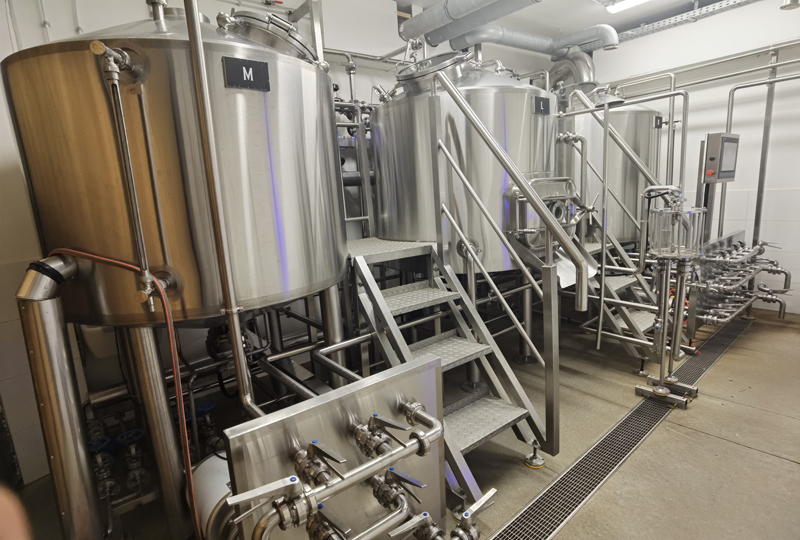What is the smallest batch we can brew on the 10HL brewhouse?
Recently, a customer asked, what is the minimum batch size of beer that can be brewed in a 10HL brewhouse? Many other customers have the same question.
Some customers want to buy a larger capacity equipment at the beginning, brew less beer when the demand is not large in the early stage, and then they don't have to worry about changing to a larger equipment when the business is good in the later stage.
Some customers may expand production and buy a large capacity brewhouse, but have a smaller fermenter, and want to use the large equipment to brew less beer occasionally.

It means the grain bed can not be over-thin or over-thick. However smaller batch means thinner spent grain bed.
As we all know, after the mashing completes, the husk of grain will form the natual filteration layer-grist bed to help brewmaster seperate clear wort from mashing liquid.
After a lot of calculations and experience, we learned that when the thickness of the grist bed is between 30cm and 40 cm, the wort filtration speed and clarity are the best.
Usually we calculated and designed the diameter of the lauter tun based on the grist bed thickness of 35cm.
If the filtration layer is too thick or too thin, it would be difficult to get good quality wort even if we use gravity to filtrate wort.

In actual beer brewing process, the spent grain thickness at 25~45cm is also acceptable.
So when brewing smaller batches of beer, less grain will be used, means the thickness of spent grain would be thinner as well, but better not less than 25cm.
If based on the 10HL brewhouse in Alston Brew, the lauter tun diameter is 1460mm, means inner radius at 0.65M. if the spent grain thickness at 25cm, means now there are total about 166KG malt being used. So if the ratio of raw material to water at 1:3, means the smaller batch is about 660L.
If you wanna know more details on how to brew smaller batches with your brewery equipment. Or need us to do calculation on spent grain thickness, please feel free to contact us!

 Jinan Alston Equipment Co.,Ltd.
Jinan Alston Equipment Co.,Ltd.